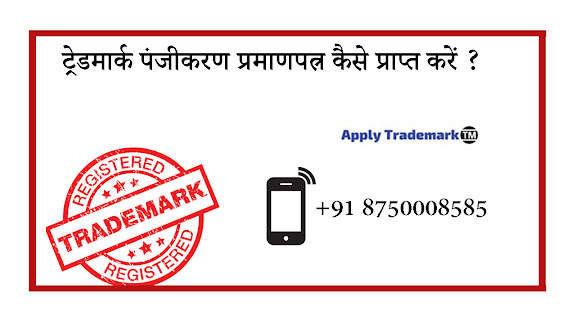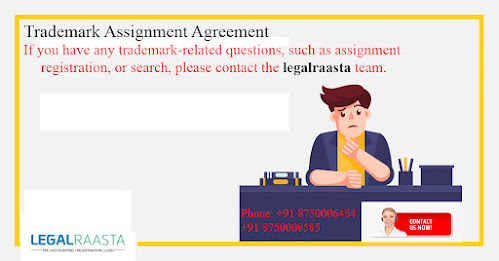Procedure for Trademark Registration
Trademarks are intellectual property rights that are granted to a person who creates a word mark , device mark, shape of goods, sound mark, symbol, or tagline for his business. A Trademark Registration grants the owner exclusive rights and distinguishes the product from similar products from other businesses. Trademarks are intangible assets for the owner, providing long-term brand protection. As a result, Trademark Registration in India has become mandatory rather thanoptional. So, in this article, we'll go over how to register a company's trademark in India, as well as the basic steps to do so.
What is Trademark Registration?
A trademark
is your company's intellectual property or intangible asset; it is the distinct
identity that differentiates your company, product, or service from the
competition. It protects your investment in establishing customer trust and
loyalty. Registering a trademark, also known as logo registration or brand
registration, protects and prevents others from using your brand or logo.
Checklist for Trademark Registration
Ø The chosen trademark must be able to
be represented on paper or graphically.
Ø To distinguish its goods and services
from others, the trademark must be unique in every way.
Ø It should be used to connect people
with the goods or services that the person is offering in order to promote the
business.
Different Trademark Symbols
Ø When your trademark is not registered
and the application status is pending, this symbol denotes the brand name.
Ø The 'SM' symbol is used to identify
the source of a service rather than a product.
Ø The 'R' symbol indicates that the
trademark has been registered and that the Certificate of Registration has been
issued by the Registrar.
How does a trademark get registered in India?
1) Documents Required for
Registration: A form is filled out and submitted to the appropriate
authorities. The documents must be assembled once the application has been
approved. Documents such as proof of business identity, trademark copy, proof
of claim, and power of attorney must be submitted along with the trademark
application form.
2)
Procedure’s cost:
Depending on the lawyer or professional you hire, trademark searches can cost
between Rs.500 and Rs.2500 per trademark per class, plus a professional
opinion. The official fees per mark per class that are required online when
filling out the application range from INR 4500 to 9000.
3) Select
your distinct brand name registration: Because once a trademark is created, it cannot be changed,
it must be carefully chosen or created. Later, the process of changing will be
time-consuming and costly.
4)Trademark Search: After you have
created your trademark, you must conduct a trademark search to see if another
person has already registered a similar or identical trademark, in which case
you must modify or change yours before proceeding. If the trademark is found to
be unique and free of offensive or specifically protected emblems, the
classification process can begin.
5)
Trademark classification: Your product or service can be classified using a trademark. The
Trademark Registry has 45 classes. Examine the entire list of classes to
determine which class your company belongs in.
6)
Completing the Application Form: When filing electronically, the acknowledgement can be
received immediately after the form is completed. After receiving
acknowledgement, you can now use the Trademark symbol (TM). When you apply to
the government website online, you will immediately receive an acknowledgement
on the government website. You will be able to use your Trademark (TM) symbol
alongside your brand name once you have received your declaration. This may
appear to be a simple task, but it is crucial for any businessman.
7)
Examine the Logo and Brand Name: The Trademark Officer verifies the information in the
application and determines whether the case is in accordance with the
Controller General of Patents, Designs, and Trademarks' rules and guidelines.
8)
Trademark Objection:
If the trademark officer discovers any problems or needs more information, he
or she will issue a trademark objection notice. Within 30 days of receiving the
notice, you must respond with adequate justification and proof.
9) Trademark Journal Publication or
Advertisement: Following the completion of the examination process, the
Registrar will publish your registered trademark in the Indian Trademark
Journal. Your trademark will be published in the Indian Trade Mark Journal
after it has been reviewed. If no opposition is filed within 90 days or, in
some cases, 120 days of the date of publication, this is a required step in the Trademark Registration Process.
10)
Trademark Hearings:
If the officer is dissatisfied with the response, a hearing will be scheduled
at which you will have to present your case through a trademark attorney.
11)
Trademark registration or issuance of a trademark registration certificate: You can use the registered trademark
symbol alongside your brand name, which bears the Trademark Registry's seal, as
soon as the Registrar issues your Registration certificate. The R symbol can
now be used next to your brand name. You will receive an acknowledgement of the
form within 15-20 days.
Conclusion
The most
difficult task is most likely obtaining a Trademark
Registration in India. It can take years to register your trademark, but
the effort is well worth it. This is an investment in your business. The
process involves numerous steps and a significant amount of money. The
trademark policy is well known among Indian businesspeople. So, in the
preceding article, we discussed how one should select a different process to
register a company's trademark. We can help you register your trademark. Please contact LegalRaasta for more information on how to Register a Trademark inIndia. Please leave a comment below or contact me via email if you have
anything to add to or comment on this article.



.jpg)
Comments
Post a Comment